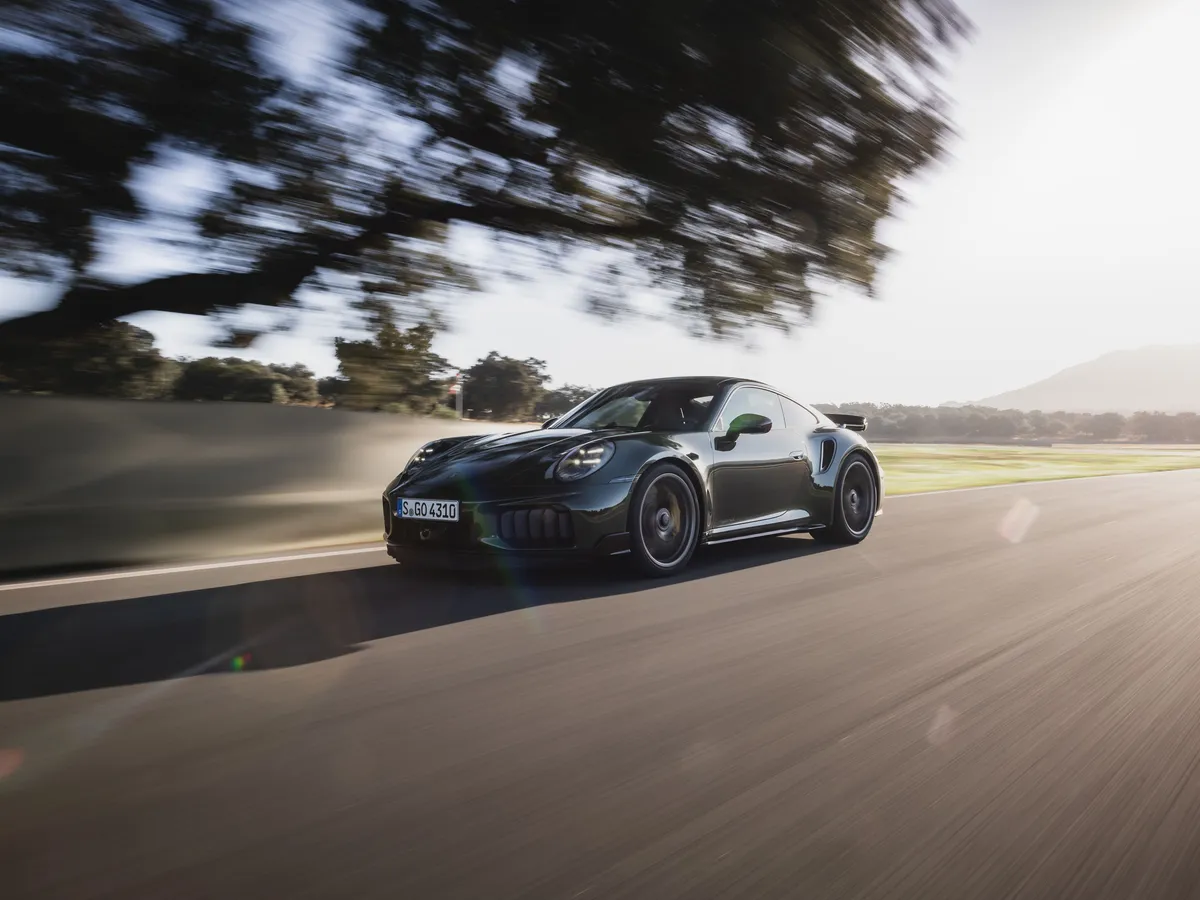Copyright expressandstar

Few monikers inspire such excitement in the motoring world as ‘Turbo’. Applied to flagship Porsche models for decades, that Turbo name has come to represent the quickest and most powerful models that Stuttgart has to offer. Now, for the 992.2-generation 911, the Turbo name has returned, heralding the arrival of an all-new flagship. However, the previous 911 Turbo was hardly lacking in the performance department, so how does Porsche go about taking things to the next level? We’ve been driving the latest 911 Turbo S to find out. As you might expect, the bulk of the changes for this latest generation of 911 Turbo S are going on underneath the car. However, this is a slightly wider and more focused Turbo than ever, with near truck-sized rear tyres and clever active aerodynamics at work across the car. The front inlets, for instance, located at either side of the front splitter, can open and close depending on the driving situation, with the system shutting them off during heavy rain to help keep the brakes dry. Of course, being a 911 means that this Turbo’s engine isn’t under the bonnet at all, but slung out at the back of the car. A 3.6-litre twin-turbocharged flat-six, it’s a Top Trumps winner if ever there was one; you’ve now got 710bhp – over 50bhp more than before – as well as 900Nm of torque. A clever hybrid system, first used on the recent GTS model, is now at play to help stoke performance figures further, with a trio of e-motors – one on each turbocharger and a third housed within the gearbox – there to boost power and reduce lag. Zero to 60mph? That’s going to be around 2.5 seconds. Zero to 124mph? Just 8.4 seconds, around that same time that it’ll take your average sporty hatchback to reach the national speed limit on a dual carriageway. They’re astounding figures, backed by a traction-boosting four-wheel-drive system which helps deliver all of that performance to the road. The Turbo S has always been the car to deliver performance in an unflustered, hassle-free manner, and this latest generation model is much the same. So even though you’ve got all of that performance to hand, it never feels overly sharp nor uncontrollable. It’s a vastly different experience from something like a 911 GT3 RS, which is raw and uncompromising. The Turbo S, in contrast, is a car which feels like it could be driven day in, day out – which is how it has always been designed. That said, the acceleration that this road car delivers is breathtaking. Bury the throttle, there’s a split-second pause, and before long you’re travelling very quickly indeed. Despite a new exhaust design, the Turbo S isn’t the most vocal, mind you, with the ‘whoosh’ of both turbochargers spooling up being the most dominant noise as you’re speeding up. Wider, meaner and more focused than ever, this latest generation car has all the hallmarks of the classic Turbo. Of course, speak to most people and the first mention of that nametag will invoke ideas of the 80s Guard’s Red model, and in many ways, this latest model has plenty of tell-tale tributes to its predecessor. You’ve got the classic air inlets on the rear side panels, though Porsche’s designers have updated plenty of elements with an exclusive ‘Turbonite’ paint colour. There’s not too much to distinguish this Turbo S model from the rest of the 992.2 range, but that’s no bad thing. The build quality is excellent, with lots of soft-touch materials used throughout. It’s a shame that Porsche decided to go with a push-button start, mind you, rather than the key-inspired switch which features on the latest GT3 models. It’s a more tactile way of starting the car, that’s for sure. As standard, the Turbo S comes in a two-seater configuration, though a pair of rear seats can be added back in as a no-cost option. While that might sound like a boost in practicality, in reality, those rear seats are only going to be roomy enough for very small children. It’ll be a handy feature for some drivers, mind you. Prices start from £199,100 for the Turbo S in coupe form, though you can also get it in Cabriolet layout from launch, which commands a higher price tag. The bulk of this cost, of course, is related to what’s going on underneath; this is a car which feels engineered to the very edge of what’s possible and all of this feels justified in the Turbo’s price. You also get plenty of creature comforts inside, including a large central display with smartphone mirroring systems and a secondary screen ahead of the driver. Though it’s configurable – and you can change the displays to mimic the look of an old-school 911 readout – we still think that this Turbo’s character could be boosted through the fitment of a classic analogue rev counter. The 911 Turbo S is back, and it’s more of a sledgehammer than ever. Its performance is more than what you’d ever expect could come from a sports car, yet it’s delivered in a way which will be approachable for all types of drivers. Its all-wheel drive system means that, yet again, the Turbo S will be a great choice for those who want year-round performance, regardless of the conditions. At nearly £200,000 base, the 911 Turbo S definitely isn’t a value-focused proposition, but as a car at the very edge of what’s possible from a petrol engine, it’s very hard to beat.



